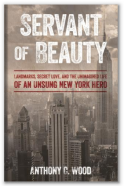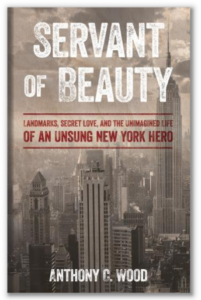The Archive Project Squared: Looking Inwards at Our Institutional Archives
May 30, 2024
By Caroline Williams, Project Archivist
My experience with the New York Preservation Archive Project began in my hometown of Baltimore, Maryland, during a period of career exploration. I lived in New York City before the pandemic but spent the last year back home working on a project cataloging and organizing over thirty boxes of my family’s documents that had been in storage for more than fifty years. Little did I know that this familial archive project would lead me to the Archive Project.
The Archive Project’s vice chair Will Cook is based in Maryland and originally met with me about my environmental interests. Will quickly identified my archival passion and encouraged me to pursue it as a career. I received a fellowship working on the archives at Cold Spring Harbor Laboratory on Long Island, and within a couple of months found myself back in New York City enrolled at the Pratt School of Information in the Library and Information Sciences program.
Weeks after moving back to New York, I met with Emily Kahn, then just weeks into her new job as the Archive Project’s executive director. Emily talked about how the Archive Project is known for saving preservation papers and for dispersing grants to other organizations stewarding preservation-related archives. Yet she expressed a desire for the Archive Project to invest more deeply in its own institutional archives, containing nearly three decades of information about the founding and work of the organization.
Together, with a shared passion for preservation and promoting public access to information, we launched the Archive Project’s own institutional archive project, referred to as the Archive Project2. The outcomes of this project will include cataloging, documenting, organizing, creating a finding aid, and presenting a long-term storage and preservation plan for the Archive Project’s institutional archive. This work will allow the Archive Project to preserve institutional memory, better understand the organization’s work as part of the broader story of historic preservation, demonstrate best practices in preserving preservation archives, and become an even more dynamic educational resource.
When I first visited the Archive Project’s office at the Kress Foundation townhouse on the Upper East Side, Emily hesitantly asked if I wanted to see the archives. Excitedly, I said yes and followed Emily down one flight of stairs to the basement, where she unlocked a door to a storage room. Inside, she pulled back a big blue tarp (a make-shift intervention to shield the boxes of paper documents from any possible water damage, and Emily’s first official purchase as executive director) which uncovered over 25 boxes of archives relating to the Archive Project’s activities over the past 25 years.
When I returned to the Archive Project’s office a couple weeks later, this time in an official capacity as a consulting archivist, I surveyed, took notes on, and wrote descriptions of all of the materials. Since then, I have been archiving the Archive Project’s collection using the hierarchical method. This type of archiving follows a systematic structure (series, date, title) to help users locate and understand the context of the archival materials. This hierarchical arrangement is used commonly in archival and library settings to create finding aids that guide researchers and users through the collection. The structure allows for a logical and systematic approach to managing diverse materials, ultimately facilitating efficient retrieval and navigation.
Currently, the Archive Project’s institutional archive is used for the organization’s own recordkeeping and management, and is not available to the public. However, with additional funding, Emily and I hope to launch a second phase of the Archive Project2 to digitize and make publicly accessible key portions of the collection. I have lost track of the number of times that I have eagerly called Emily over to see an exciting document that has been tucked away for decades, and we know that others would benefit from having access to these vital preservation history resources.
Many people would describe sifting sheet by sheet through boxes of papers as tedious, but Emily and I have found this process both fun and rewarding. Although we are relatively new to the Archive Project, this work has allowed us to transport back in time to the start of the organization and witness the decisions that transformed it into the City’s leading advocate for preservation history. Each day that passes, more stories from the Archive Project emerge, and we look forward to sharing these stories with the public in the near future.




